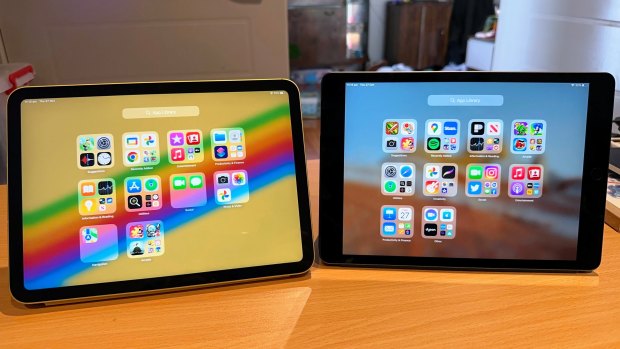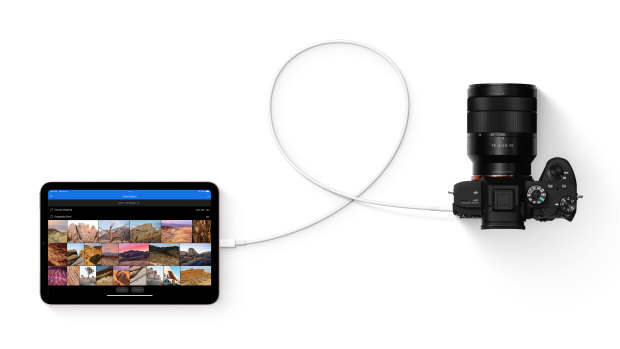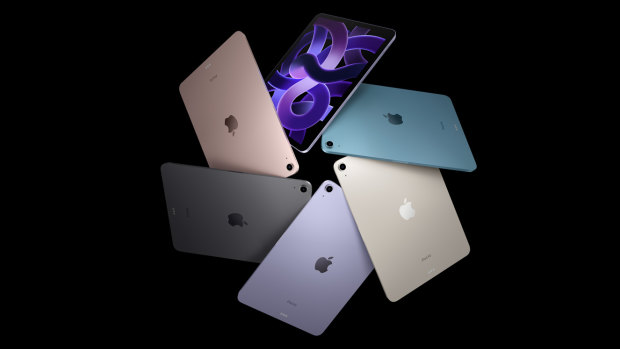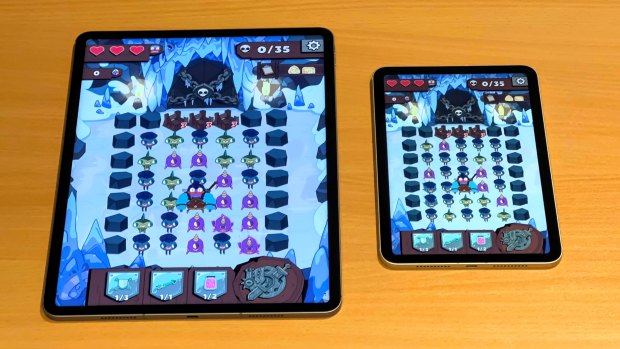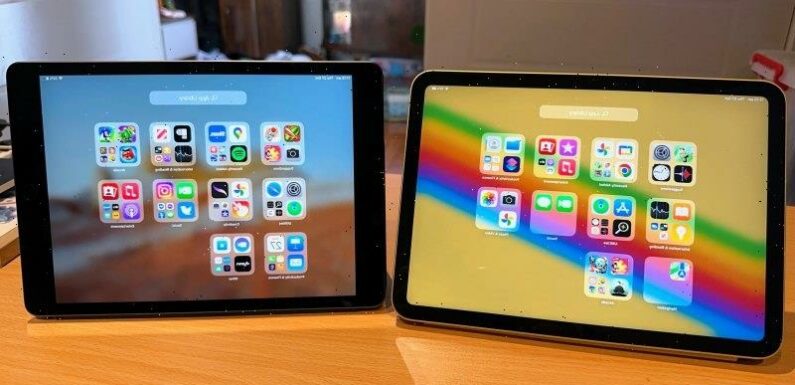
With Apple’s latest tablets on sale this week, the company now has the largest and most diverse lineup of iPads in the product’s 11-year history. But it’s also the most confusing and expensive lineup, with scores of features across half a dozen distinct devices.
To help unpick it all, here’s what each of the six iPads have to offer.
The latest iPad Pro is essentially a touchscreen MacBook.
iPad (Gen 9)
iPhone 11 class A13 processor
10.2-inch display
Starts at $549
This 2021 model is the final iteration of the original iPad form, including the Home button and those big black bezels (the non-displaying parts around the borders of the screen) on the top and bottom. It may lack a lot of the high-end features of the most expensive iPads, but it still offers plenty of display real estate and processing power for most users.
It’s compatible with the sold-separately Apple Pencil Gen 1, has basic cameras front and back, and weighs in at 487 grams; the second heaviest of the lineup.
In a move that’s the opposite of what you might expect to happen, Apple bumped the price of this model up $50 when it announced its successor a week and a half ago. That’s a shame because at $499 it was an easy recommendation for school work and general home use, but it’s still good value at $549.
The iPad Gen 10 (left) is immediately a nicer-looking machine than the Gen 9.Credit:Tim Biggs
iPad (Gen 10)
iPhone 12 class A14 processor
10.9-inch display
Starts at $749
The brand new standard iPad is wonderful to use, but sits in a strange middle ground between the older Gen 9 and the iPad Air. With the Home button gone (there’s a Touch ID sensor on the top) the screen gets a bit bigger, there’s a nicer main camera, and the front camera has moved to the long side in recognition that most people will have the device in landscape mode for video calls.
Apple has included a USB-C port here instead of the Lightning found on the Gen 9, but it still only supports the Apple Pencil Gen 1. That means, if you want to use Apple’s stylus with the Gen 10 iPad, you need to use a silly and extremely misplaceable adaptor.
Elsewhere improvements are minor and largely come from the more advanced processor. It’s quite a bit faster in all tasks.
A very fast processor and USB-C port make the iPad Mini an ultra-portable work station.
iPad Mini
iPhone 13 Class A15 processor
8.3-inch display
Starts at $829
Obviously, whether or not you want a little iPad will be the most important factor in judging the Mini against the rest, but this is a very interesting device in its own right. It’s very light at 293 grams, supports the fancy Apple Pencil Gen 2, and has a fully laminated display which looks much less glassy than the two less expensive models.
The A15 makes the Mini the most powerful iPad still using an iPhone-class processor. And, since it has essentially the same screen resolution as its larger siblings but a smaller area, it’s also the sharpest looking of the entire lineup. This makes it a great portable games or movies machine.
Other than the chip and size, the iPad Mini is basically comparable to the more expensive iPad Air. Unfortunately, it was also affected by Apple’s decision to raise prices last week. This same model used to start at $749, so has gone up $70.
The iPad Air is secretly the least expensive Pro iPad.
iPad Air
Mac class M1 processor
10.9-inch display
Starts at $999
The Air is a step above the Gen 10, with many similar features but a thinner and lighter design, fully laminated display, support for Apple Pencil Gen 2 and a significantly more powerful processor.
In effect, the Air satisfies both the original vision for the iPad as a home media machine and the modern tablet use case of an ultra-portable productivity device. The M1 chip gives this machine a lot of graphical power and the same kind of processing performance you’d expect from a $1500 MacBook Air. But at the same time, its single USB-C port and iPadOS don’t offer the same flexibility as a Mac.
It might be hard to justify the Air if you don’t need the graphical power for work. But it could be great for professionals who don’t want to drop $1400 on a Pro. Once again, the Air has seen a price bump in the last few weeks; it used to start at $929.
iPad Pro 11-inch
Mac class M2 processor
11-inch display
Starts at $1399
This is the machine for folks who want the most capable device possible in a holdable size and shape. The Pro models add an extra camera and LiDAR scanner on the rear, depth-sensing and Face ID on the front, Thunderbolt support for attaching powerful accessories and external monitors, a brighter screen and faster display refresh.
It’s also worth noting the Pro models have a minimum of 128GB of storage, whereas other iPads have the option of 64GB, which accounts for some of the pricing difference. And, of course, it has the M2 chip, which makes it as capable of many of Apple’s newest computers. Anyone working with large photos or videos would notice a big difference between this and the less expensive tablets.
The Pro is clearly designed to be the ultimate creative all-in-one workstation, although many people in jobs that require it would also need to get a Gen 2 Pencil and Magic Keyboard, so you’d be looking at an extra $700 or so.
The iPad Pro 12.9-inch has more than twice the surface area of the iPad Mini, and is more than twice as heavy.Credit:Tim Biggs
iPad Pro 12.9-inch
Mac class M2 processor
12.9-inch display
Starts at $1899
At 28cm by 21.5cm size, this is practically too big for a tablet, but the dimensions let this iPad act as a laptop with very few compromises, while also being comparatively portable. Other than size and weight (it’s a massive 682 grams), the big Pro is very similar to the 11-inch, with one key difference.
The screen here is a mini-LED panel as compared to the LCDs on all other iPads, unlocking the ability to display HDR content and much deeper blacks. In person, it’s an astonishingly nice display, looking crisper and smoother than most TVs, and feeling better to work with than practically any touchscreen laptop.
Like the 11-inch model, the new internals in this Pro power some advanced capabilities like capturing ProRes video at 4K 60fps, or detecting a Pencil Gen 2 as it hovers above the screen to give a preview of your touch or brush stroke. But for most, it will be complete overkill.
Get news and reviews on technology, gadgets and gaming in our Technology newsletter every Friday. Sign up here.
Most Viewed in Technology
From our partners
Source: Read Full Article

